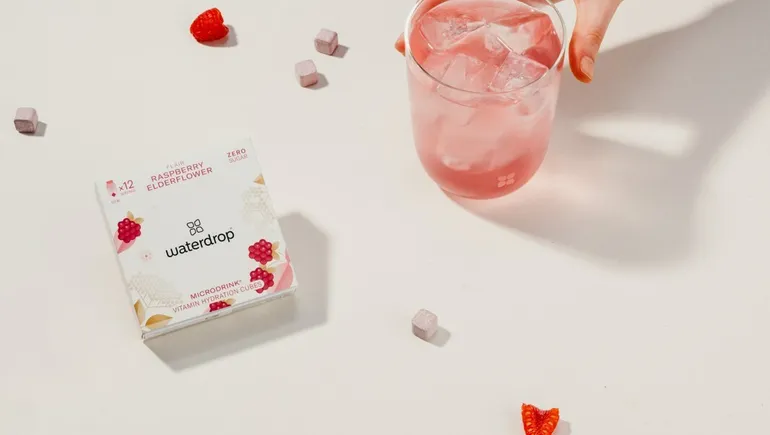Why Waterdrop’s CEO sees hydration beverages overtaking soft drinks

As more consumers seek out hydration options, a seven-year-old Austrian company is looking to capitalize on the trend by thinking small.
Waterdrop is selling “microdrink” hydration cubes with zero sugar that can dissolve in reusable water containers, making them a popular option for Gen Z and other consumers interested in reducing their environmental footprint and improving their health.
The company first entered the European market in 2019 before a 2021 U.S. launch. In 2022, it raised $70 million in a funding round. It also sells bottles in an array of formats and sizes that can be used to store any liquid hot or cold.
Waterdrop CEO Martin Donald Murray told Food Dive that the genesis of the company came from the desire to look beyond the traditional “sugar water in plastic bottles.”
“Putting liquids into bottles, shipping them around the planet, drinking them and disposing of them doesn’t make any sense,” Murray said in an interview.
He predicts during the next 10 years that more consumers will move away from soft drinks in plastic bottles. At the same time, consumer interest in using their own bottles and mixes will become common, and eventually shipping bottles of beverages to stores will no longer be needed.
“Our core thesis is that water filtration is going to grow massively, and that idea of filtering your own tap water at home or at the office is going to become much more omnipresent, which then you can make more palatable or functional,” Murray said.
Its microdrinks are packaged in small containers that the company said are recyclable. Waterdrop noted that the cap of one traditional soda bottle is the equivalent of ten Waterdrop cubes.
After the success of the microdrinks and its expansion into big box retailers like Target, Waterdrop has since expanded into variations of its original products: Microlyte, containing electrolytes, and Microenergy, containing natural caffeine. The offerings are available in a range of tastes, from Cola to Iced Tea to Mango Prickly Pear flavors.

A Waterdrop retail store.
Courtesy of Waterdrop
Leaning into retail
While it is achieving the largest portion of its sales on e-commerce platforms, the company also is leaning heavily into brick-and-mortar retail locations.
In 2021, Waterdrop launched its first physical location in the U.S. and now has seven across the country, with 42 total locations globally. Murray said the stores help the company gather consumer data about which products are resonating.
“Having an offline presence allows customers to browse to test and try, and also gives a lot of trust,” Murray said. “The interplay between offline and online is important because customers want to experience things. They want to go to a nice store and speak to somebody face-to-face.”
The electrolyte-based drinks space is booming, and is projected to grow at a compound annual growth rate of 5.9% through 2032, according to Precedence Research. Waterdrop saw over $100 million in annual revenue last year, the company said.
Other hydration brands like Unilever’s Liquid I.V. and Coca-Cola’s BodyArmor are finding success with powder products. Murray said Waterdrop’s product innovation will be centered around its cubed format, and continuing to add better-for-you ingredients like vitamins and natural fruit extracts.
“A cube is a significant departure from any kind of syrup that has preservation chemicals, horrible packaging or even powder sticks,” Murray said.
The company is turning to sports to boost its brand recognition in the beverage space, including through a partnership with tennis star Novak Djokovic and ATP in tennis. Waterdrop simultaneously partnered with men’s tennis tournament ATP Tour.
The viral water bottle craze of brands like Stanley and Owala, fueled by Gen Z consumers on TikTok, caused the items to be among the most popular holiday gifts. Murray said the space is primed to grow even more, and the company believes its formulations can compete among the biggest brands.
“There’s a lot of water bottles out there but not so many brands that make great water bottles,” Murray said. “It took us six years to get to a quality standard that we’re really proud of. It’s not so easy to really find the technology to actually make it very portable.”
Source: fooddive.com

